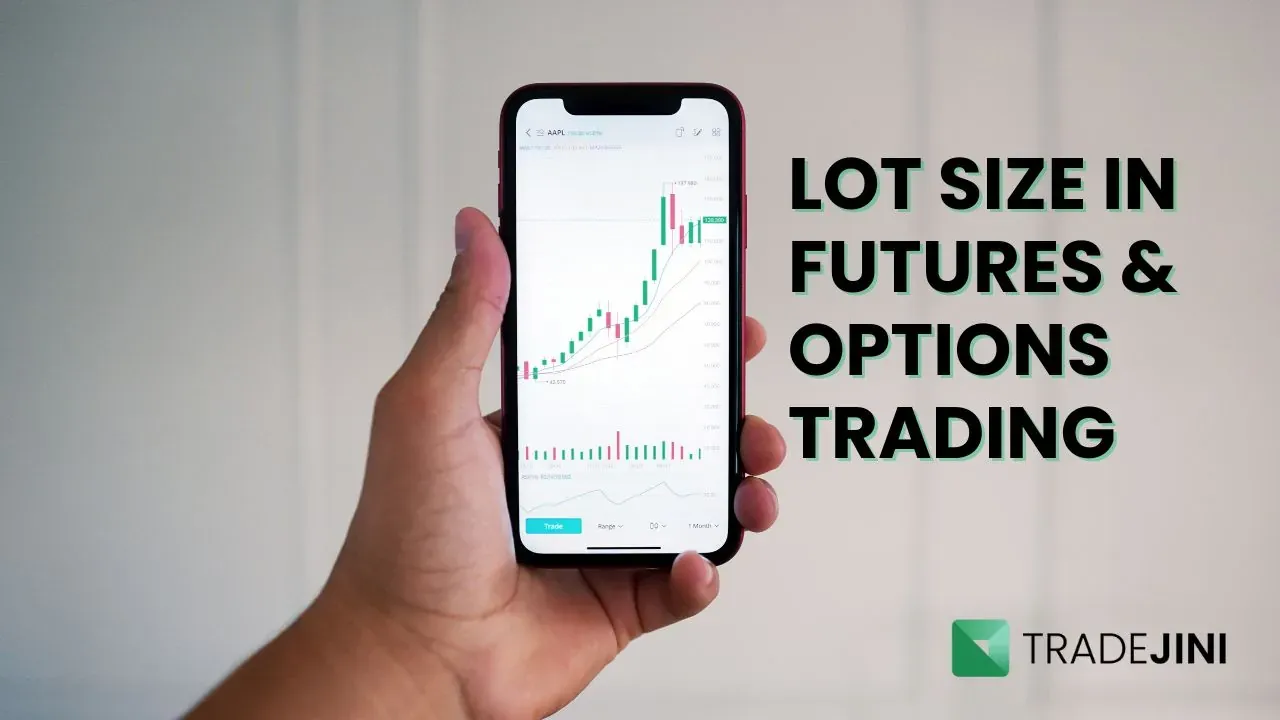Understanding ETFs: A Guide to Diversified Investing
Investing in the stock market can seem overwhelming, especially if you don’t have the time to analyze individual stocks. But Exchange-Traded Funds (ETFs) offer a simple solution for investors looking for diversification, flexibility, and risk management without the need for constant monitoring. Whether you are a beginner or a seasoned investor, ETFs allow you to invest in a broad range of assets with ease through a stock trading app or brokerage platform, making them an ideal option for those with busy schedules. Let’s break down what ETFs are, their advantages, and how you can get started with investing in them.
What Are ETFs?
ETFs are investment funds that hold a basket of securities—such as stocks, bonds, or commodities—and trade on stock exchanges like individual stocks. They combine the best features of mutual funds and stocks, offering diversification, cost efficiency, and ease of trading.
The first ETF in India, Nifty Bees, was launched in 2002, tracking the Nifty 50 index. Today, investors can choose from a wide range of ETFs covering equities, bonds, gold, and even global markets.
Why ETFs?
ETFs offer several advantages over traditional mutual funds and direct stock investments. Benefits of ETFs over mutual funds include lower costs, day trading flexibility, and greater transparency. Here is why they are gaining popularity:
1. Diversification Without Hassle: Instead of picking individual stocks, ETFs allow you to invest in a broad market index or sector with a single trade, spreading risk effectively.
2. Lower Costs: Unlike actively managed mutual funds, ETFs usually track an index passively, leading to lower expense ratios and higher cost efficiency.
3. Intraday Trading Flexibility: Day trading ETFs trade like stocks, allowing investors to buy and sell throughout the trading day at real-time prices.
4. Tax Efficiency: ETFs often generate fewer taxable capital gains compared to mutual funds, making them a tax-efficient investment option.
5. Transparency: Most ETFs disclose their holdings daily, giving investors a clear view of where their money is allocated.
Types of ETFs
There’s an ETF for almost every investment strategy. Here are some of the most popular ETF categories:
1. Equity ETFs
- Index ETFs: These ETFs track popular market indices like Nifty 50, Sensex, or Bank Nifty, offering exposure to various companies within those indices. They provide a cost-effective way to invest in the overall market performance without needing to pick individual stocks.
- Sectoral ETFs: These ETFs focus on specific sectors of the economy, such as banking, IT, pharma, or infrastructure. They allow investors to capitalise on the growth potential of particular industries while maintaining diversification within that sector.
- Thematic ETFs: Thematic ETFs invest in emerging trends or innovative industries such as renewable energy, artificial intelligence (AI), or healthcare. These ETFs target themes that are expected to grow in the long term, giving investors a chance to tap into future opportunities.
- Smart Beta ETFs: Smart Beta ETFs use alternative weighting strategies (other than the traditional market-cap weighting) to either enhance returns or reduce risks. For example, they may focus on factors like value, momentum, or volatility, offering a more strategic approach to investing.
2. Debt ETFs
- Government Bond ETFs: These ETFs invest in government securities, such as bonds issued by the central government. With minimal credit risk, they provide a relatively stable income stream, making them a popular choice for conservative investors.
- Corporate Bond ETFs: These ETFs focus on bonds issued by corporations, which usually offer higher yields than government bonds but with slightly higher risk. They allow investors to diversify their bond holdings and potentially earn more income.
- Liquid ETFs: They focus on short-term, low risk ETF instruments like Treasury bills, commercial papers, or certificates of deposit. Liquid ETFs are ideal for investors seeking liquidity and stability, with low-duration exposure to interest rate movements.
3. Gold ETFs
- Gold ETFs invest in physical gold or gold derivatives, providing an easy and secure way to gain exposure to gold prices without having to buy and store physical gold. These ETFs track the price of gold and are popular among investors looking to hedge against inflation and economic instability.
4. International ETFs
- Global Equity ETFs: These ETFs provide exposure to international markets, including major economies like the US and Europe, or emerging markets like China and Brazil. They are a way to diversify your portfolio globally and reduce reliance on domestic markets.
- Country-Specific ETFs: These ETFs invest in stocks from a specific country, such as the US, China, or Japan. By targeting individual countries, investors can gain focused exposure to the growth prospects of those economies.
5. Commodity ETFs
- Commodity ETFs track the price of commodities like gold, silver, or oil. In India, gold ETFs are popular, but some international markets offer ETFs that track other commodities. These can be a way to invest in commodities without the complexity of managing the physical asset.
6. Currency ETFs
- Currency ETFs are designed to give investors exposure to foreign exchange (forex) markets. These ETFs can be used to hedge against currency fluctuations or to gain from changes in the value of foreign currencies relative to the Indian rupee. They provide an easy way to invest in global currencies without directly trading them.
7. Hybrid ETFs
- Multi-Asset ETFs: These ETFs combine various asset classes, such as stocks, bonds, and commodities, into one investment product. They provide diversified exposure to different types of assets, which can help spread risk and offer more balanced returns across market conditions.
8. Special ETFs
- Inverse ETFs: These ETFs are designed to profit from declining markets by using derivatives or short-selling strategies. They are typically used by traders who expect a market downturn but are currently restricted in India.
- Leveraged ETFs: Leveraged ETFs aim to amplify returns by using leverage, offering 2x or 3x the returns of the underlying index. While they can provide higher rewards, they also come with greater risk and are generally considered more suitable for short-term traders. Leveraged ETFs are rare in India.
- ESG ETFs: These ETFs invest in companies that meet environmental, social, and governance (ESG) criteria. They appeal to socially responsible investors who want to align their investments with their values, focusing on companies that are sustainable and ethical.
- Sharia-Compliant ETFs: These ETFs follow Islamic investment principles by excluding companies that are involved in activities like alcohol, gambling, or non-halal food. They provide an investment option for those looking to adhere to Sharia law in their financial decisions.
Comparison table of stocks, futures and ETFs
| Feature | Stocks | Futures | ETFs |
|---|---|---|---|
| Ownership | Direct company ownership | No ownership, contract-based | Basket of assets (stocks, bonds, etc.) |
| Risk Level | High, depends on stock performance | Very high, involves leverage | Moderate, diversified exposure |
| Capital Requirement | Full price of shares needed | Margin required (can be leveraged) | Lower, can buy in small units |
| Leverage | No leverage | High leverage | No leverage |
| Liquidity | High for large stocks | High but can be volatile | High for major ETFs |
| Trading Hours | Market hours only | Extended trading available | Market hours only |
| Diversification | Limited to individual stocks | No diversification, single contract | High, spreads risk across assets |
| Volatility | Can be high | Very high due to leverage | Lower than individual stocks |
| Costs | Brokerage + taxes | Brokerage + rollover costs | Low expense ratio, brokerage fees |
| Best For | Stock pickers, long-term investors | Experienced traders, short-term speculators | Passive investors, diversification seekers |
How to Invest in ETFs?
Getting started with ETFs is simple. Here’s a step-by-step guide:
Step 1: Educate Yourself Understand what ETFs are, their risks, and how they fit into your financial goals.
Step 2: Open a Demat and Trading Account You need a Demat account to hold ETFs and a trading account to buy/sell them. Choose a reliable broker like Tradejini to open your demat account.
Step 3: Fund Your Account Link your bank account to your trading platform and deposit funds to start investing.
Step 4: Choose the Right ETF Research ETFs based on factors like performance history, underlying assets, fees and trading volume.
Step 5: Place your trade Buy ETFs through your broker using a market or limit order, just like stocks.
Step 6: Monitor and manage your investment Regularly track your ETFs as you do for your stocks and rebalance your portfolio if required.
Conclusion
ETFs have revolutionized investing by making it easier and more cost-effective to diversify across multiple asset classes. Whether you’re looking for long-term wealth accumulation, sector-specific exposure, or a hedge against inflation, there’s an ETF to suit your needs. If you know which sector you want to invest in but are unsure about picking individual stocks, ETFs are your best bet. Think of it like knowing the direction but not the exact destination - ETFs help you stay on course, offering diversification and reducing the risk of choosing the wrong stock while still benefiting from the sector’s growth.
That said, always assess your risk tolerance, research the right ETFs, and avoid chasing trends blindly. With a well-planned strategy, ETFs can be a powerful tool in building a balanced investment portfolio.
_11zon.webp?alt=media&token=bd974821-aee4-43a5-b467-01d1a67a570b)
_20_11zon.webp?alt=media&token=6659b2e6-927e-42de-8375-e227e579f556)
_11zon.webp?alt=media&token=a8f3f55c-dc70-4d42-844e-6874ceff69ce)
_11zon.webp?alt=media&token=a05d2324-cace-44ed-a35f-50f9e63be9c3)
_11zon.webp?alt=media&token=14cd8f87-8add-49ce-84f1-ca07a0c52b0c)



